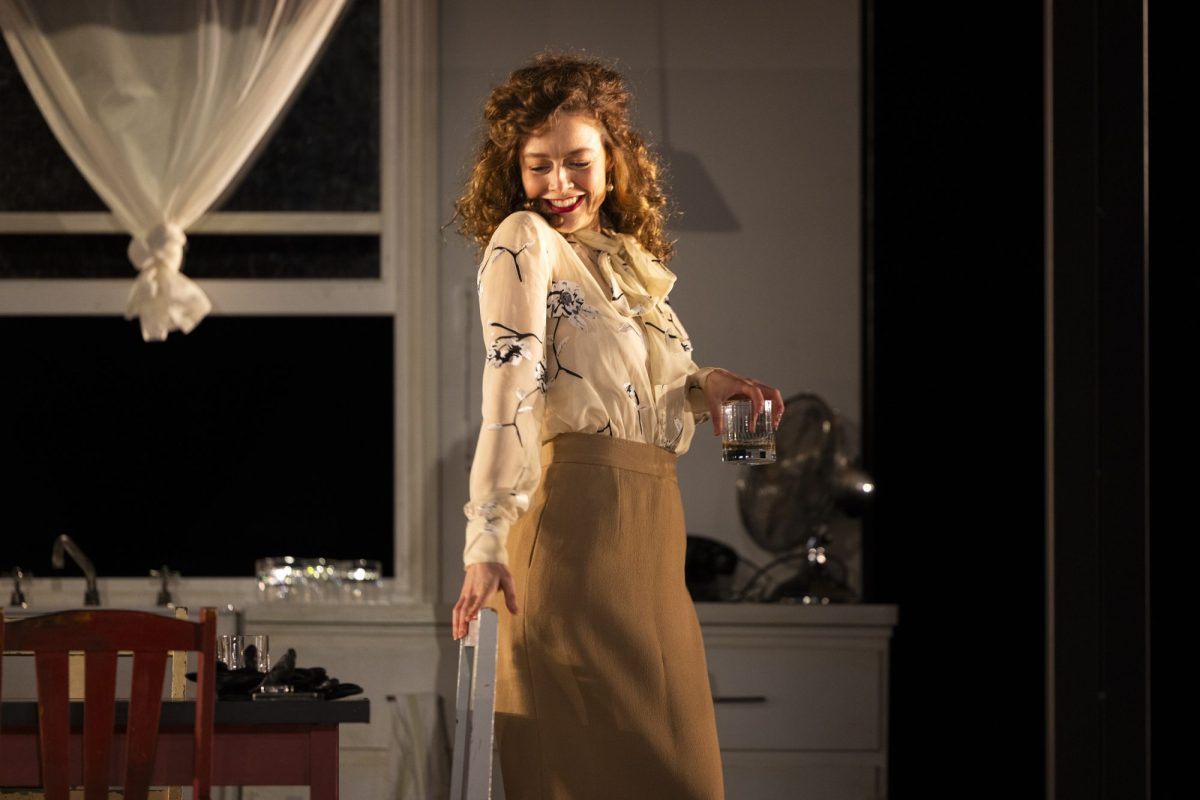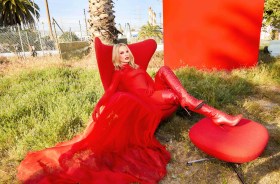You know that thing when you read or hear two such disparate responses to a performance that all you can think is ‘did they even see the same show?’ Well, perhaps sometimes they actually didn’t. Because we rarely give enough consideration as to where the viewer was sitting at the time.
In film, the director, editor and cinematographer are able to direct your vision most precisely, but in the theatre the people sitting in the back row can have a radically different experience to those sitting up close.
This preamble is all by way of saying that this reviewer saw A Streetcar Named Desire, the latest production from the Melbourne Theatre Company (MTC) twice – once on opening night, literally in the very back row of the stalls, and again a couple of nights later, in a seat a few rows from the front. And the two experiences differed significantly. Some elements of the production that didn’t seem to work first up were resolved, while others remained problematic. On the whole though, the second viewing was far and away the more satisfying of the two.
But first the play itself. Tennessee Williams’ classic drama was first produced in 1947 at the Ethel Barrymore Theatre in New York. It has since had numerous revivals and seen a host of theatrical luminaries take on the central roles.
It tells the story of Blanche DuBois, a faded Southern belle, down on her luck and visiting her sister Stella in a sultry and sweaty New Orleans, where she lives with her husband, Stanley. He’s a man cut from a very different cloth to the genteel sisters, though Stella is deeply, deeply in love with him. The mismatch that ensues once Blanche moves in on their tiny space leads to tension and, ultimately, tragedy.
While the likes of Jessica Tandy, Vivien Leigh (who also appeared in the film version in 1951 and won an Oscar for it), Jessica Lange and, more recently, Gillian Anderson have all made their mark in the leading role of Blanche, it is perhaps safe to say that no role in the history of theatre has ever been as closely associated with one towering performance than that of Stanley Kowalski and the part’s originator, Marlon Brando. And this is despite later award-winning renditions of the character from actors such as Alec Baldwin and, just last year, Paul Mescal.
So how do you take on such a mantle? How do you approach not only the text, but also such familiar characters and the standout lines that come with so much cultural memory for almost anyone in the audience? How do you solve a problem like Maria? Or declaim ‘A handbaaaaag’ without the imperious, sonorous vowels of an Edith Evans.
It can be done. Right now, Melbourne is lucky enough to have two of the greatest plays in the US 20th century canon being performed on its mainstages. Who’s Afraid of Virginia Woolf? also brings with it the challenge of its undeniable association with previous casts. In this Red Stitch Actors’ Theatre production, which recently transferred to the Comedy Theatre, Kat Stewart and David Whiteley play the parts seared into our collective memories by Elizabeth Taylor and Richard Burton. And they succeed superbly. Perhaps it’s the fact of those two actors also being partners offstage that lends their work such resonance and credibility. But also, smartly, director Sarah Goodes’ approach first and foremost was to go back to the text. Albee provides everything you need right there on the page.
Like Albee, Williams is a master of the craft of playwriting. And like Goodes, Ann Louise Sarks (director of Streetcar and also the MTC’s artistic director) has also sensibly approached the play by going right back to the source material and interrogating it anew.
This is a pared back, focus-on-the-words production, which leans into the humour more than is sometimes the case and builds its tension slowly. It doesn’t, perhaps, quite succeed in that trickiest of challenges – taking oft-quoted lines and divorcing them from previous deliveries. You can almost see Mark Leonard Winter contorting himself into a pretzel in order to not channel Brando when crying out ‘Stella, Stella!’, while Nikki Shiels’ ‘I have always depended on the kindness of strangers’ line is similarly off-key, although this has more to do with the staging of the preceding scene than her delivery per se.
Production wise the staging is on the minimalist side, with an unadorned two-up-and-two-down New Orleans dwelling placed on a smooth revolve, so that from time to time it reveals more of the upstairs rooms or, in Stella’s and Stanley’s home, the minuscule bathroom where Blanche likes to spend so much time steeping herself in a hot tub, ostensibly to quell her nerves.
But on first viewing, the set and atmosphere seemed stark and almost cool. It took a closer view to begin to feel the heat, although the production could dial this up even more. The various cast members’ accents also sat a little more comfortably on the ears second time around, so hopefully these will settle even more as the run continues.
Being able to see the actors’ faces more clearly absolutely assisted in following the troughs and peaks of Shiels’ performance as Blanche, which has a great deal more nuance than originally discerned. This is confident and eye-catching work, as it should be, with Shiels’ physicality carefully considered to portray a woman for whom appearance is everything.
The tug of war between her Blanche and Winter’s Stanley has been intelligently orchestrated by Sarks to view the relationship through a more contemporary lens. This is not a Blanche who can simply be written off as crazy or feeble-minded, but one who has faced considerable hardship and is using all of her wiles (and her sexuality) to not only survive, but even create a little magic around herself.
However, the issue with this is by the end of the play Blanche is destroyed. She may not be crazy, but all of her veneers have been cruelly stripped away and she has nothing left.
Winter does his best to remove the shadow of Brando that looms over his shoulder by focusing on a perhaps more realistic portrayal of a working class man, but this dissipates the threat. Above all it was Brando’s hungry physicality and brute force that defined his portrayal. When Winter faces Shiels in their final confrontation, he offers the line ‘we’ve had this date with each other from the beginning’, but it doesn’t have the necessary impact or impart a sense of dread. While Shiels may not be exactly sturdy, you have the feeling she could simply kick a well-aimed heel in his direction and change the game.
After all, we already know that Blanche has far more experience with all sorts of men than she initially admits. To totally overwhelm and conquer her, Stanley has to become the animal, the sub-human, the survivor of the Stone Age that Blanche describes him as to Stella in Scene Four. Without that, the climax of the play loses its power.
It’s still a strong production from the MTC, following a couple of outstanding ones earlier in the 2024 season, including 37 and Julia, but it doesn’t quite hit the heights it could have and leave the audience as devastated as they should be.
A Streetcar Named Desire, Playhouse Theatre, Arts Centre Melbourne
Produced by Melbourne Theatre Company
Written by Tennessee Williams
Director: Anne-Louise Sarks
Set and Costume Designer: Mel Page
Lighting Designer: Niklas Pajanti
Music: Stefan Gregory
Intimacy Coordinator: Amy Cater
Voice and Dialect Coach: Geraldine Cook-Dafner
Fight Director: Nigel Poulton
Assistant Director: Joe Paradise Lui
Assistant Set and Costume Designer: Bianca Pardo
Cast: Gabriella Barbagallo, Kaya Byrne, Michelle Lim Davidson, Stephen Lopez, Steve Mouzakis, Veronica Peña Negrette, Nikki Shiels, Katherine Tonkin, Mark Leonard Winter, Gareth Yuen
A Streetcar Named Desire will run at Arts Centre Melbourne, Playhouse until 17 August 2024.






